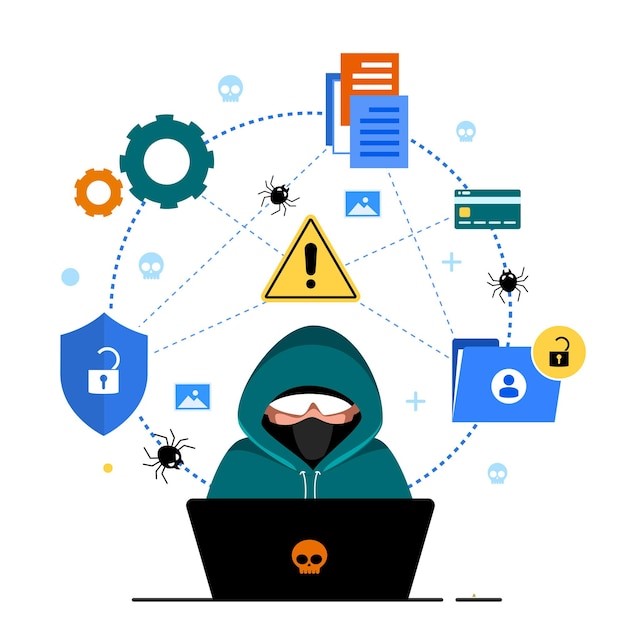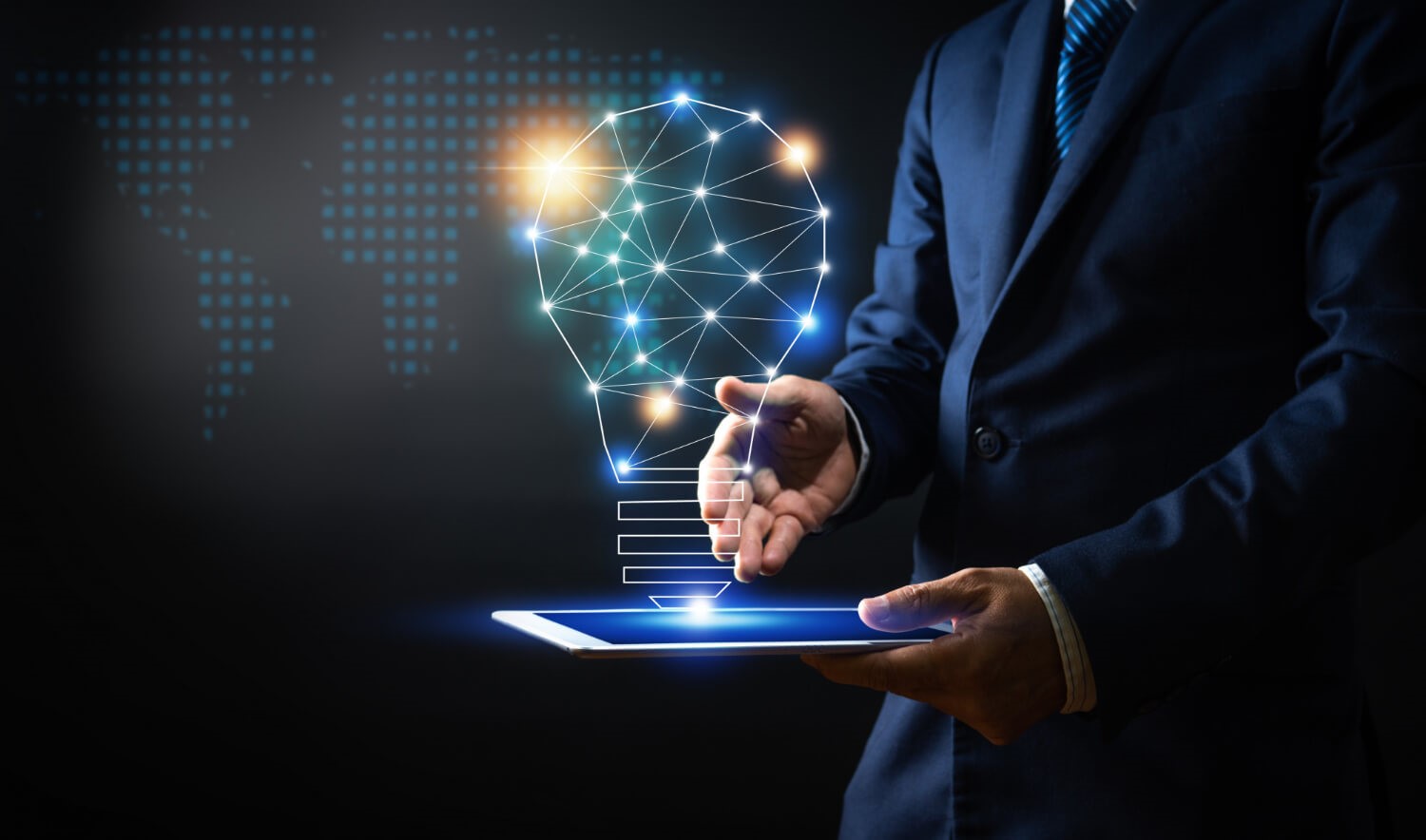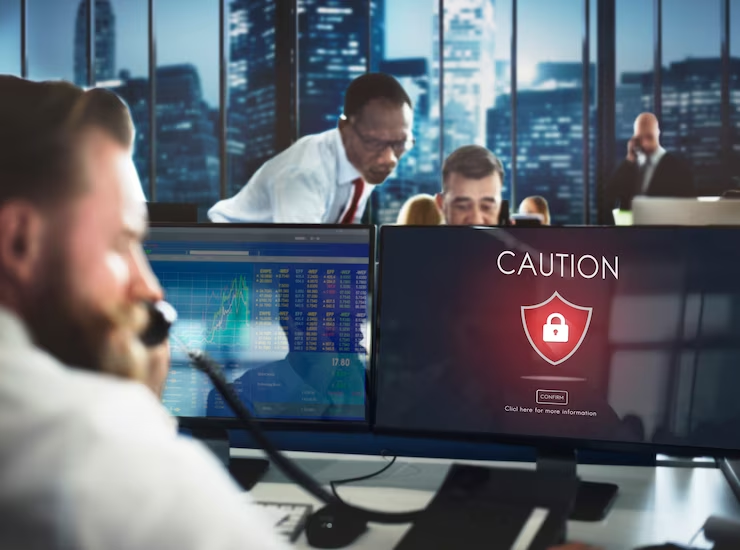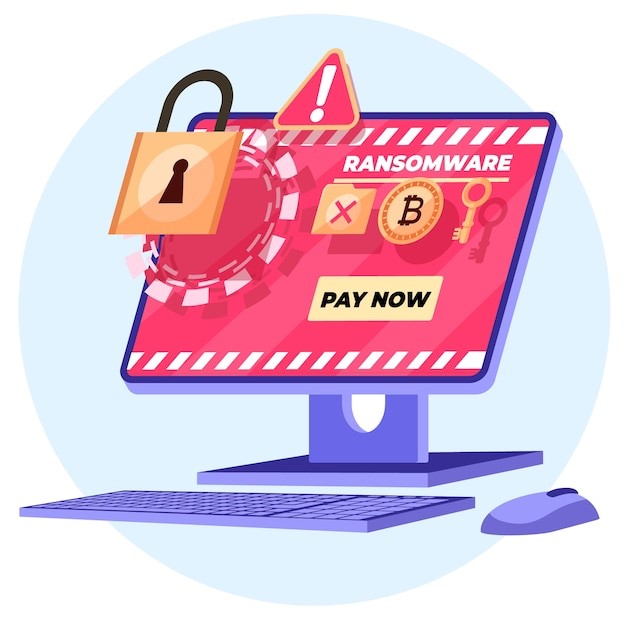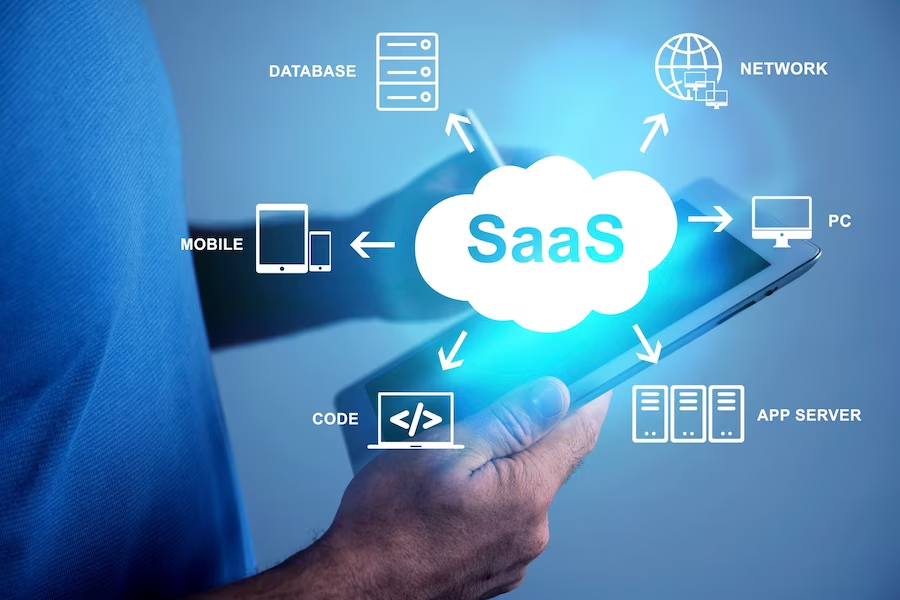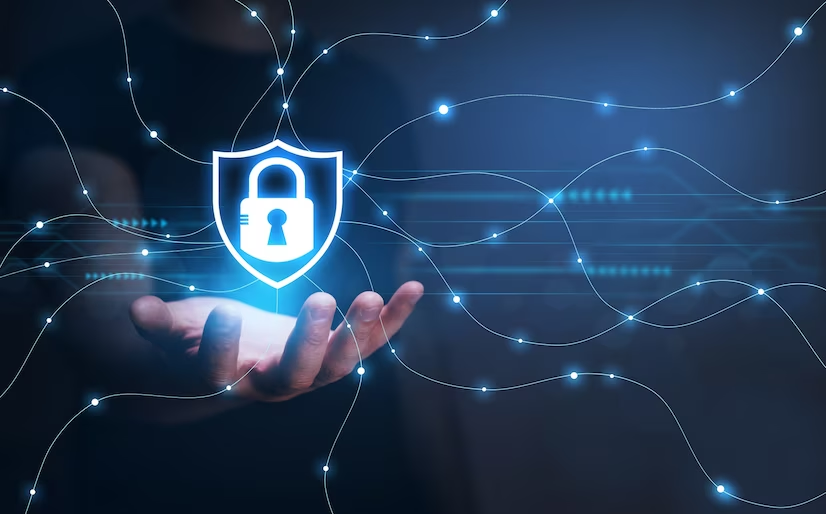10 Benefits of a Digital Workplace: Why Do Companies Need One?
In the contemporary corporate landscape, the digital workplace stands as an integral part of the work experience. As you contemplate the optimization of your organization's digital workspace, the pertinent question arises: What are the advantages of technology in the workplace, and why modern workplace benefits are so crucial? To answer your questions, this blog will help you understand the benefits that come with a digital workplace. Delve into the ten pivotal benefits of digital culture for businesses that a well-structured digital workplace offers to elevate productivity, foster innovation, and ensure long-term competitiveness.
Before diving into the benefits, let’s understand more about digital workplaces.
Understanding Digital Workplace
A digital workspace, often called a virtual workspace, consolidates application and desktop management, enabling secure access to corporate resources from any location and device, whether in a data center or the cloud. It goes beyond remote access, encompassing enterprise mobility trends. IT administrators benefit from streamlined resource management through tools like application and desktop virtualization, mobile application management, enterprise mobility management, and more. These digital transformation benefits enhance efficiency, security, and accessibility for both employees and administrators, making it an essential component in the modern work environment.
Understanding the benefits of digital communication in the workplace is fundamental. A digital workplace solution is more than just remote access; it's a holistic approach to streamlined resource management, fostering efficiency, security, and accessibility for employees and administrators alike in the modern work environment. To make it easier for organizations, IT company Mobiz Inc offers immense benefits of innovation in the workplace through cutting-edge technologies, such as Desktop as a Service (DaaS), ZTNA, Citrix service, and secure-access service.
Digital Workplace Benefits
Here are the benefits of the digital workplace in today’s world:
Enhanced Flexibility
Within an effective digital workplace, employees benefit from heightened flexibility in their work schedules and environments. With the aid of digital tools, like mobile intranet software, team members can connect from anywhere, allowing them to focus less on rigid schedules and, in turn, affording them the flexibility to achieve a more harmonious work-life balance.
Cost Efficiency
Embracing virtual meetings and interactive chat platforms reduces or even eliminates the need for in-person collaboration, leading to savings on travel expenses and overhead costs related to office space and furnishings. Opting for a Software as a Service (SaaS) model also eliminates the necessity for a large in-house IT team, as it eliminates the management of on-premise servers and custom software that demands time-consuming maintenance.
Enhanced Productivity and Efficiency
Today's collaborative landscape, featuring shared tools like Google Docs and shared calendars, streamlines real-time collaboration and project completion. These digital advancements streamline processes, enabling employees to accomplish more in less time. A recent survey conducted by CoSo Cloud indicates that 77% of remote workers are experiencing increased productivity, largely attributed to these digital efficiencies.
Additionally, the implementation of user-friendly tools empowers teams to manage and troubleshoot independently, freeing up IT experts and internal support teams to focus on mission-critical tasks.
Revenue Growth
The ability to simultaneously reduce costs and boost productivity translates to increased revenue for an organization. Avanade's digital workplace research underscores this, revealing a 43% revenue increase in organizations that have embraced digital workplaces.
Fostering Communication and Innovation
A well-structured digital workplace encourages two-way communication between employees at all levels, facilitating the free exchange of ideas within the organization.
Elevating Employee Experience
Collaboration tools, including employee directories, social profiles, and activity feeds, enable employees to interact and connect, fostering strong professional bonds, teamwork, and a sense of belonging.
Heightened Performance
The use of effective digital tools, such as an intranet integrated with Google Analytics, enables the identification of key performance indicators (KPIs) like bounce rates and time spent on site. Combined with business transformation services, organizations can pinpoint areas for improvement and optimize processes both internally and externally.
Strengthening Talent Attraction and Retention
In the competitive talent landscape, top candidates expect progressive and advanced work environments. Delivering on these expectations through a digital platform helps attract skilled and innovative candidates. Furthermore, companies with digital workplaces report a 25% lower turnover rate, retaining talented employees and reducing turnover costs.
Enhancing Employee Satisfaction
A well-constructed digital workplace provides opportunities for networking, team collaboration, and idea sharing. These capabilities, which empower employees to freely express their opinions and feel valued, promote overall job satisfaction and engagement. Moreover, remote work opportunities lead to a 24% increase in employee happiness, making the workforce more adaptable and responsive to employee needs.
Elevating Customer Experience
Employees who experience a better work-life balance, feel heard, and are equipped to work efficiently with reduced stress become more passionate brand advocates. This, in turn, translates to a happier customer base, as employees who care more about their work naturally lead to more satisfied customers.
Final Thoughts
The benefits of digital transformation for employees enable higher growth and profitability for modern organizations. It enhances employee flexibility, reduces operational costs, and boosts productivity and efficiency. It leads to increased revenue, fosters communication and innovation, and elevates the overall employee experience. Additionally, it strengthens performance measurement, talent attraction, and employee retention. The digital workplace also significantly improves employee satisfaction and well-being, promoting a more engaged workforce. Ultimately, it results in a happier customer base through employees who are more passionate about their work. In a rapidly changing world, adopting a digital workplace is not an option but a strategic necessity for businesses aiming to thrive.
VDI vs VM: Understanding the Differences Between VDI and VM
Virtualization is integral to modern computing, allowing multiple operating systems to coexist on one physical machine. This optimizes resource utilization, cutting hardware expenses and streamlining management. Two prevalent virtualization technologies, Virtual Desktop Infrastructure (VDI) and Virtual Machines (VM), share commonalities while offering distinct advantages tailored to specific applications. In this blog, we will explain the key benefits of each technology, comparing VDI vs. VM. Continue reading until the end to find out!
What Is VDI?
VDI, short for Virtual Desktop Infrastructure, epitomizes computer virtualization, housing desktops on remote servers. It empowers numerous users to tap into their dedicated virtual desktops, each running on an independent operating system and boasting distinct resources like CPU, memory, and storage.
Leveraging remote access, users can seamlessly connect to their virtual desktops from any internet-connected device. VDI serves as a staple in business settings, catering to scenarios where employees require remote or cross-device access to their desktop environments.
What Are VMs?
Virtual Machines (VMs) are simulated environments mimicking physical hardware to accommodate several operating systems on a single physical server. Achieved by partitioning a server's resources – CPU, memory, and storage – into distinct virtual entities, VMs stand as isolated, customizable units. Each VM operates autonomously, capable of hosting diverse operating systems and applications. VM technology serves as a cornerstone for optimizing server resource utilization, consolidating physical hardware, and promoting efficiency.
Differences Between VDI and VM
VDI and VM stand as distinct virtualization technologies, with both commonalities and disparities. VDI facilitates the use of virtual desktops hosted in data center servers, while VMs enable diverse operating systems on a single server by creating virtualized hardware.
Crucially, VDI and VMs diverge in the level of isolation they offer between virtual environments. VDI shares resources among users, while VMs grant high isolation, each virtual machine operating independently.
In terms of management, VDI benefits from centralized control via a connection broker, simplifying administration. Conversely, VM management involves handling each machine individually, requiring more time and effort.
On the other hand, uunderstanding the distinctions between a virtual machine versus a virtual server and the contrasting dynamics of a virtual machine-based setup versus a session-based configuration holds pivotal importance within the virtualization landscape. Virtual Desktop Infrastructure (VDI) and Virtual Machines (VM) represent two pillars of virtualization, each tailored for distinct purposes. VDI serves as a linchpin in remote desktop solutions, enabling users to seamlessly access dedicated virtual desktops residing on remote servers. Conversely, VMs create simulated environments, allowing multiple operating systems to coexist on a single physical server, optimizing resource utilization and refining server management efficiency. This blog extensively explores the nuances between VDI and VM, shedding light on their specific functionalities and management approaches, offering valuable insights into the realm of virtualization technology.
Different Types of VDI
Three primary VDI environments—persistent, non-persistent, and pooled—offer unique characteristics:
- Persistent VDI: Users maintain consistent access to the same virtual desktop, with changes saved and carried forward across sessions.
- Non-Persistent VDI: Each login provides a fresh virtual desktop, and any session changes are discarded upon logout.
- Pooled VDI: Multiple virtual desktops stem from a single image, granting each user a temporary session. Changes are wiped upon logout.
Different Types of VMs
Virtual machines fall into two primary categories: Type 1 hypervisors and Type 2 hypervisors.
- Type 1 Hypervisors: Also called bare-metal hypervisors, these run directly on a server's physical hardware. Predominantly found in data centers, they offer superior performance and security compared to Type 2 hypervisors.
- Type 2 Hypervisors: Operating atop an existing OS, Type 2 hypervisors are prevalent on desktops and laptops. They sacrifice some efficiency but provide greater flexibility and user-friendliness.
Applications of VDI
VDI, a favored desktop virtualization technology, yields several business advantages, giving rise to robust digital workplace solutions. Some of the most common applications of virtual desktop (VDI) include the following:
- Remote Working: Facilitating remote work, VDI permits employees to access their virtual desktops from anywhere using any device.
- BYOD Support: VDI aligns with BYOD policies, granting employees access to virtual desktops from their personal devices.
- Centralization: By centralizing desktop infrastructure in data centers, VDI reduces the need for physical hardware, fostering efficient remote desktop access.
Applications of VMs
VMs find application in various scenarios, such as Citrix service by IT company Mobiz Inc. To fully grasp the virtual machine vs virtual desktop concept, you must understand the following applications of VMs that will clarify the difference between virtual machine and virtual desktop:
- Server Consolidation: VMs consolidate multiple physical servers into a single virtualized environment, optimizing hardware use and cost-efficiency.
- Development and Testing: VMs create isolated testing environments mirroring production settings for extensive development and testing.
- Disaster Recovery: VMs play a pivotal role in disaster recovery solutions, ensuring the swift recovery of virtualized environments in case of unforeseen disasters.
VM vs VDI: Which One Is Right for Your Business?
Are you confused about virtual desktop vs virtual machine? Selecting between VDI and VM pivots on tailored requirements. For remote desktop access, opt for VDI, while VM suits server consolidation. Thoroughly assess needs and weigh resource allocation, isolation, management, and performance factors in your decision-making process. Once you understand the difference between virtual desktop and virtual machine, it is best to tailor your choice to precise demands for optimal outcomes.
Closing Thoughts
While many people are confused about the virtual machine vs remote desktop concept, understanding the difference between VM and VDI is crucial. VDI (Virtual Desktop Infrastructure) and VM (Virtual Machines) are two fundamental virtualization technologies. VDI allows users to access virtual desktops hosted on remote servers, ideal for remote work and centralized management. VMs, in contrast, simulate multiple operating systems on a single physical server, making them suitable for server consolidation and development/testing environments. VDI offers shared resource environments, while VMs provide high isolation. VDI management is centralized, while VMs require more individual handling. The choice depends on specific business needs, such as remote desktop access (VDI) or server consolidation (VMs), considering factors like resource allocation, isolation, and performance.
Frequently Asked Questions
Why Is VDI Better?
VDI offers centralized management, remote access, BYOD support, resource efficiency, isolation, security, and customization, making it advantageous for specific scenarios.
What Is the Difference Between VDI and Server?
VDI, or Virtual Desktop Infrastructure, allows remote desktop access for users. Servers are dedicated to running applications, processing data, and managing network resources.
What Is the Difference Between VDI and VM?
VDI (Virtual Desktop Infrastructure) is focused on delivering virtual desktops to individual users, while VM (Virtual Machine) provides a broader virtualization platform for running multiple operating systems and applications on one server. VDI is ideal for remote desktop access, while VMs are versatile for consolidating servers, creating isolated environments, and managing multiple applications.
Is VDI the Same as Remote Desktop?
VDI and remote desktop are related but not the same. VDI provides virtual desktop environments hosted on remote servers, while remote desktop typically involves accessing a specific remote computer's desktop. VDI is more scalable and suitable for enterprise environments, whereas remote desktop is often used for individual or small-scale remote access.
What Is the Difference Between VDI and Citrix?
The difference between VDI and Citrix lies in their scope and purpose. VDI is a broader concept of virtualizing desktops, while Citrix is a specific company offering virtualization solutions, including Citrix Virtual Apps and Desktops (formerly XenApp and XenDesktop), which fall under the VDI category. So, VDI is a virtualization approach, while Citrix is a company providing VDI solutions as part of its offerings.
Debunking The Top 5 Cybersecurity Myths: Unravelling Cybersecurity Myths and Misconceptions
In today's digital age, the significance of cybersecurity cannot be overstated. With every aspect of our lives becoming increasingly interconnected and reliant on technology, the need for robust digital defenses is more critical than ever. However, misconceptions and myths about cyber security often cloud our understanding, leading to complacency and leaving us vulnerable to a myriad of threats. In this blog, we embark on a journey to dispel cyber security myths that continue to misinform and misguide individuals and organizations. By dispelling these misconceptions, we hope to shed light on the ever-evolving landscape of digital threats and empower you with the knowledge needed to safeguard your digital world effectively. Let's delve into the cyber security myths and facts and equip ourselves with the tools and insights to fortify our defenses.
Top Cybersecurity Myths- Debunked!
Here are the explanations for the top 5 cyber security myths:
Effective Cyber Defense: Beyond Technical Expertise
When envisioning the realm of cyber threat defense, we might picture a lone individual in a dimly lit room scrutinizing a monitor for signs of network intrusion. However, the reality is quite different. In fact, a significant majority of cyberattacks (as reported in a 2022 study by the UK government, a staggering 89%) involve a more subtle approach known as social engineering. This approach hinges on the art of deceiving someone with authorized access to grant unauthorized entry. Contrary to popular belief, guarding against such threats demands more than just programming, systems administration, or computer science skills. It requires vigilance, risk management, knowledge of regulations and compliance, and, most importantly, common sense. In the world of cybersecurity, comprehending the human element of these attacks proves to be paramount, as that is often the Achilles' heel that cybercriminals exploit.
A Concern for All, Not Just Businesses
It's a common misconception that cybercriminals solely target businesses or affluent individuals. This notion is far from the truth. Every minute, thousands of attacks are aimed at individuals, primarily in the form of phishing attempts. These cyber security threats seek to extract sensitive information that can be leveraged to infiltrate our devices or accounts. Other prevalent network security threats against individuals include endeavors to implant viruses, spyware, or keyloggers that clandestinely monitor keystrokes, thereby pilfering vital data like passwords, credit card numbers, or bank account details. Another rising menace that frequently targets individuals is the botnet, where hackers hijack numerous computers to harness their computing power for activities like cryptocurrency mining. In most cases, cybercriminals favor targeting individuals, as they often lack the security measures that businesses employ to detect and thwart such attacks. In such situations, cyber security services come to the rescue! This way, you can ensure to protect your systems, applications, and devices against all sorts of threats that align with the common cybersecurity myths in today’s world.
Cybersecurity Is Not Solely IT's Responsibility
In the past, employees often relied on the IT department to shield them and the organization from cyber threats. However, as the threat landscape diversifies and shifts away from technical assaults, the onus now rests on everyone to be vigilant and cultivate an awareness of safety and best practices. In the corporate boardroom, cybersecurity must be an integral component of the business strategy. Moreover, rank-and-file employees should comprehend the significance of everyday cybersecurity measures, including recognizing and thwarting phishing attempts, utilizing robust passwords, and safeguarding data when working remotely.
Beyond the Basics: Strong Passwords, Firewalls, and Antivirus
While robust passwords, firewalls, and antivirus software are critical components of cybersecurity, the belief that nailing these fundamentals will suffice is a common misconception. Together, these elements serve as the foundation of the technical aspects of cybersecurity, akin to the front door, walls, and guard dog of your digital abode. Yet, malicious actors often employ brute force attacks or social engineering tactics to bypass supposedly secure passwords. Therefore, additional measures, such as multi-factor authentication (MFA), are indispensable. Firewalls, while essential, are not impregnable and, like antivirus solutions, demand constant monitoring for potential breaches and updates. Ultimately, these technical defenses are rendered useless if you or another authorized entity neglects the human factors that we've previously discussed, inadvertently granting access to intruders.
The Elusive Insider Threat
Media attention predominantly focuses on external cybercriminals, obscuring the reality that up to 75 percent of cyberattacks are initiated by insiders. Trusted by virtue of their roles within organizations, insiders possess knowledge of internal systems and processes, which can be exploited to circumvent security measures. Tackling these threats necessitates a delicate approach, as excessive scrutiny or lack of trust in staff may yield consequences just as detrimental as any cyberattack. Moreover, the transition to remote work due to the pandemic has introduced a surge in poor cybersecurity habits, leaving organizations even more vulnerable.
Final Thoughts
In our exploration of the top five cybersecurity myths, we've discovered that the conventional image of a solitary technical expert battling hackers is outdated. The majority of cyberattacks involve social engineering and human vulnerabilities, challenging the notion that cybersecurity is solely a business concern. We've established that digital security is a shared responsibility, encompassing IT departments and all employees. While strong passwords, firewalls, and antivirus software are essential, they're not foolproof, necessitating additional measures like multi-factor authentication and continuous monitoring. Insider threats, often overlooked, can be as damaging as external attacks. Embracing these insights, we can adapt to an ever-evolving cyber landscape and fortify our defenses.
Frequently Asked Questions
What are the top 3 cyber security threats?
The top 3 cybersecurity threats are as follows:
- Phishing Attacks
- Advanced Persistent Threats (APTs)
- Ransomware
What is the enemy of cybersecurity?
The enemies of cybersecurity are multifaceted and include malicious actors, malware, and phishing attacks. Insider threats, human error, and weak security measures also pose significant risks. Vulnerabilities in software and outdated systems are common targets, while inadequate cybersecurity practices and policies can leave organizations vulnerable.
DaaS in Cloud Computing: Types, Benefits, and Implementation
Desktop as a Service (DaaS) is a cloud computing solution that involves a service provider delivering virtual desktops to end-users over the internet through a per-user subscription model. DaaS providers handle backend management, making it an efficient choice for small businesses seeking to reduce the costs and resource demands associated with maintaining their virtual desktop infrastructure. This management encompasses tasks like maintenance, backups, updates, and data storage. Cloud service providers can additionally oversee security and application provisioning, although users also have the option to manage these aspects independently. Let’s understand how does DaaS work in more detail.
What Is Daas in Cloud Computing: What Are Its Types?
Desktop as a Service (DaaS) in cloud computing offers businesses flexibility and cost-effectiveness in the realm of virtual desktop solutions. It presents two distinct desktop types: persistent and non-persistent.
- Persistent Desktop: Users can personalize their desktop, saving their configurations for each login. However, these require more storage, making them costlier.
- Non-Persistent Desktop: These desktops reset after users log out and are primarily for accessing shared cloud services. DaaS providers often allow both options, enabling specific user needs while accommodating temporary or occasional workers.
Benefits of DaaS
DaaS cloud computing offers the following benefits:
- Rapid Deployment: Quick activation and deactivation of end users, especially beneficial for businesses with fluctuating workforce needs.
- Reduced IT Downtime: Facilitates remote IT support, minimizing employee downtime.
- Cost Savings: DaaS devices are cost-efficient and energy-saving due to their lower computing demands.
- Device Flexibility: Supports various operating systems and device types, embracing the BYOD trend.
- Enhanced Security: Data is stored in secure data centers, reducing risks associated with device theft. Security updates are easier to manage remotely.
How DaaS Works
Cloud desktop providers host infrastructure, network resources, and storage in the cloud, streaming virtual desktops to users' devices. Users access these desktops via a web browser or specific software, with subscription-based scalability.
New technology allows DaaS to support graphics-intensive applications, ensuring smooth performance even for CAD and GPU-accelerated applications. It is best to implement cloud based desktops using help from IT company Mobiz Inc. for a seamless desktop cloud computing experience. Besides, you may need to integrate Citrix service, combined with secure-access service for enhanced security and optimized performance.
 DaaS vs. VDI
DaaS vs. VDI
While both cloud computing Desktop as a Service (DaaS) and VDI deliver centralized virtual applications and desktops, they differ in setup, architecture, control, cost, and agility. These variations influence their suitability for different organizational needs.
| DaaS | VDI | |
| Architecture | Many cloud DaaS solutions leverage a multi-tenancy architecture, where one application instance serves multiple customers. The provider distinguishes each customer's services dynamically. However, if other tenants compromise security or resource consumption, it can impact your service in a multi-tenant setup. | The majority of VDI solutions are single-tenant, providing customers with a dedicated environment. This single-tenant architecture in VDI offers IT administrators complete control over resource distribution and configuration. It ensures resource overuse or disruptions caused by other organizations are not a concern. |
| Cost | DaaS entails minimal upfront costs, operating on a subscription model. Its pay-as-you-go pricing fosters flexible scalability and cost efficiency, especially advantageous for SMBs with variable resource requirements. | VDI necessitates a significant capital expenditure (CapEx) for server acquisition and upgrades, making it a fitting choice for enterprise-level organizations with projected growth and substantial resource needs. |
| Control | Cloud vendors have full control over their IT infrastructure, encompassing monitoring, configuration, and storage, potentially limiting your visibility and control. DaaS relies on internet connectivity for access, increasing susceptibility to breaches and cyberattacks. | VDI deployments grant organizations complete control over IT resources. Employing a single-tenant architecture ensures that IT administrators maintain authority over user access to virtual desktops and applications. |
Use Cases for DaaS
- Users with Multiple Endpoints: DaaS allows users to access multiple virtual desktops on a single device, enhancing efficiency, which is especially beneficial for roles like software development.
- Contract and Seasonal Workers: Provisioning virtual desktops for temporary or seasonal employees is expedited with DaaS, ensuring swift activation and deactivation.
- Mobile and Remote Work: DaaS offers secure access to corporate resources from any device and location, ideal for remote and mobile employees seeking increased productivity.
- Mergers and Acquisitions: DaaS simplifies onboarding new employees in the event of a merger or acquisition, streamlining network integration.
- Educational Institutions: IT administrators can easily grant individual virtual desktops to teachers and students, deactivating them upon departure.
- Healthcare Professionals: DaaS ensures privacy by granting specific access to healthcare professionals based on their roles and permissions, safeguarding patient information.
Selecting a DaaS Provider
- Scalability: Ensure the DaaS solution can scale effortlessly to accommodate hundreds or thousands of users, simplifying user onboarding and offboarding.
- Resource Provisioning: Opt for a DaaS provider that allows resource provisioning based on varying workload demands, preventing overpayment.
- Data Center Location: Choose a DaaS provider with data centers close to your employees to optimize network infrastructure and minimize latency-related issues.
- Security and Compliance: Industries with strict security and compliance requirements should select a DaaS provider that meets these standards.
- User-Friendly Interface: An intuitive DaaS solution streamlines employee tasks and reduces IT administration responsibilities related to OS and application management.
- Cost-Value Comparison: Compare the costs and value offered by different DaaS providers to ensure you're getting the best service in line with your organization's needs.
Challenges in Implementing Data as a Service (DaaS)
Unique Security Considerations
DaaS necessitates data movement to cloud infrastructure and network transfers, introducing security risks absent in local, behind-the-firewall setups. These risks can be mitigated with data encryption for secure transit and cybersecurity frameworks and firewalls like PaloAlto.
Additional Compliance Steps
Organizations may encounter compliance challenges when sensitive data transitions to a cloud environment. Compliance requirements should be met through tailored DaaS solutions, such as hosting data on specific-country cloud servers for compliance adherence.
Potentially Limited Capabilities
Some DaaS platforms may restrict the number of devices for data work, limiting tool selection to those compatible with the platform. Opting for a flexible DaaS solution that supports various devices alleviates this constraint.
Data Transfer Timing
Large data transfers to DaaS platforms might face delays due to bandwidth limitations. The impact of this challenge depends on an organization's data transfer frequency.
How to Get Started with DaaS
Starting with Data as a Service (DaaS) may appear daunting, given its relative novelty, but the process is straightforward, especially when compared to setting up an on-premises data processing solution. DaaS simplifies deployment, and providers offer technical support, reducing the need for specialized staff.
Here are the key steps to follow:
- Choose a DaaS Solution: Consider factors like cost, scalability, reliability, flexibility, and integration ease with existing workflows and data ingestion when selecting a DaaS provider.
- Data Migration: Depending on data volume and network speed between your local infrastructure and DaaS, migration may vary in time requirements.
- Leverage the DaaS Platform: Start using the DaaS platform for faster, more reliable data integration and insights delivery.
The Bottom Line
Desktop as a Service (DaaS) is a cloud computing solution that simplifies the delivery of virtual desktops to end-users. It caters to various use cases, including users with multiple endpoints, contract workers, and remote employees. DaaS offers benefits like rapid deployment, cost savings, and enhanced security. Choosing the right DaaS provider is crucial, considering factors such as scalability, resource provisioning, data center location, and cost-value comparisons. Despite its advantages, DaaS presents unique security and compliance challenges. Getting started with DaaS is straightforward, eliminating the complexity of setting up an on-premises data processing solution. DaaS is a cost-effective solution for managing virtual desktop needs with scalability and data security.
9 Types of Malware Attacks and What You Can Do About Them
With the rise in cybersecurity risks, understanding and countering malware attacks are paramount. Malware, including viruses, ransomware, and spyware, poses multifaceted threats to computer systems and data. This guide explores nine types of malware attacks and provides proactive defense strategies. Continuous user education, robust network security, vulnerability assessments, security audits, and backup procedures form the core of protection. Advanced solutions, such as endpoint security tools and platforms offer added layers of security. With knowledge and readiness, organizations can fortify their defenses, shielding their systems, data, and reputation from the persistent menace of malware.
What is Malware Attack?
Malware, short for malicious software, encompasses a diverse range of programs or files deliberately designed to inflict harm upon computer systems. These harmful intentions may manifest in various ways, from causing disruptions and unauthorized access to outright destruction or theft of sensitive data. Malware exhibits the unsettling ability to infiltrate not only individual devices but also entire operating systems and interconnected networks. The extent of its impact varies depending on the specific type and objectives of the malware, potentially ranging from mere annoyance to catastrophic data breaches. Recognizing the ever-present threat it poses, it is universally acknowledged that robust malware detection and anti-malware protection constitute vital pillars within the realm of cybersecurity, regardless of an organization's size or scope.
Different Types of Malware Attacks
Malware encompasses a diverse array of malicious software designed to harm computer systems and compromise user data. Understanding these various types is essential for effective cybersecurity:
Virus Malware
Viruses are software programs that clandestinely infiltrate applications or operating systems. They can steal data, disrupt device functionality, and damage applications and data. This term is often used generically to describe other malware types.
Ransomware Malware
Ransomware employs encryption to block access to a victim's data until a ransom is paid. In some cases, attackers not only encrypt data but also exfiltrate it, further coercing organizations. Paying the ransom offers no guarantee of data recovery.
Fileless Malware
This category doesn't install software initially but instead manipulates essential operating system files like PowerShell and Windows Management Instrumentation (WMI). Traditional antivirus tools struggle to detect these attacks, as the operating system often regards the modified files as legitimate.
Spyware Malware
Spyware surreptitiously collects user information, including passwords, payment data, messages, and documents, without consent. While initially prevalent on desktops, it now poses a more significant threat to mobile devices.
Bot Malware
Bot malware, often deployed as worms, trojans, or rootkits, self-replicates to infect numerous devices. These compromised devices form a botnet, enabling attackers to execute automated actions under their control, such as launching DDoS attacks or mining cryptocurrency.
Adware Malware
Adware tracks user browsing activities and displays unwanted ads. Although similar to spyware, adware typically doesn't capture keystrokes or compromise devices. It invades privacy and may lead to malicious actions via deceptive advertising.
Trojan Malware
Trojan horses masquerade as legitimate software and rely on social engineering to infiltrate victim devices. Once inside, they deploy malware designed to exploit the device, providing attackers with backdoor access, running keyloggers, installing viruses, and stealing data.
Rootkit Malware
Rootkits provide malicious attackers with remote control over a victim's computer, offering full administrator privileges. They can be injected into various system components, including applications, kernels, hypervisors, or firmware.
Worms Malware
Worms are designed to spread rapidly across networks, infecting devices through operating system vulnerabilities, software flaws, backdoors, or infected external media. Once deployed, attackers can launch DDoS attacks, steal data, or initiate ransomware attacks.
Malware Delivery Methods
Malware employs various delivery methods to propagate from an initial attack vector to other systems:
Email Attachments
Malicious code in email attachments can be executed when users open them, spreading malware throughout the network.
File Servers
Vulnerabilities in protocols like SMB/CIFS or NFS can facilitate quick malware spread, particularly in legacy systems.
Cloud-Based File Sharing
Cloud software can inadvertently copy malware to users' devices or removable media.
Peer-to-Peer (P2P) File Sharing
Seemingly harmless files shared via P2P networks can introduce malware.
Remote Exploitable Vulnerabilities
Vulnerabilities that require little or no user intervention, like the Log4j vulnerability, can enable attackers to gain system access.
Malware Attack Prevention Best Practices
Protecting your organization against malware requires a multifaceted approach:
Continuous User Education
Regularly educate users on best practices for avoiding malware, including not downloading unknown software, recognizing phishing attempts, and ensuring devices have up-to-date malware protection.
Network Security
Implement proven network security service technologies like firewalls, intrusion detection/prevention systems, web application firewalls, and VPN-only remote access to control network access.
Regular Vulnerability Scans
Conduct routine scans for vulnerabilities, misconfigurations, and malware infections, prioritizing remediation efforts. Mobiz, an IT solutions provider, helps businesses reap all the benefits of network security to protect their devices, applications, and systems.
Security Audits and Penetration Tests
Perform security audits and penetration tests to uncover vulnerabilities and weaknesses, even if not mandated by compliance standards.
Backup and Recovery
Regularly back up data in secure locations to recover from malware attacks. Test backups to ensure they can be successfully restored.
Endpoint Security
Utilize endpoint security solutions, including next-gen antivirus (NGAV) and Endpoint Detection and Response (EDR) tools, to identify, block, and isolate threats.
eXtended Detection and Response (XDR)
XDR solutions offer comprehensive threat detection by analyzing internal and external traffic, threat intelligence, machine learning, and behavioral patterns. They provide robust incident response management to identify different malware types and mitigate them accordingly.
Advanced Malware Protection
Consider advanced threat detection and response platforms which offer protection against zero-day attacks, APTs, advanced malware, and trojans through behavioral analysis, exploit detection, and thorough threat visibility.
By implementing these best practices and utilizing cybersecurity services, organizations can bolster their defenses against malware and reduce the risk of data breaches and system compromise.
The Bottom Line
In a world fraught with diverse malware threats, understanding and defending against these digital dangers is crucial. Malicious software, or malware, takes many forms, from viruses to ransomware, spyware, and rootkits. Employing a multifaceted approach, organizations can mitigate these risks. Continuous user education, network security measures, regular vulnerability assessments, security audits, and robust backup procedures form the foundation of malware defense. In an evolving digital landscape, proactive measures and knowledge empower organizations to safeguard their data, systems, and reputation from the pervasive threat of malware.
Frequently Asked Questions
What are the types of malware attacks?
Here are the most common types of malware attacks:
- Trojans
- Viruses
- Ransomware
- Worms
- Spyware
What is the difference between malware and Trojan?
Malware is a general term for malicious software that harms systems or data. Trojan is a specific type of malware that pretends to be legitimate software to deceive users into unwittingly executing harmful actions.
Which Malware Changes an Operating System?
There are several common forms of malware that can alter an operating system. One specific type is known as "rootkits." Rootkits are malicious software designed to gain access to a computer and modify the system's software at a deep level, often exploiting vulnerabilities to gain administrative control. They can change or replace system files, alter system configurations, and hide their presence by subverting security measures.
10 Types of Business Transformation
Business transformation encompasses profound shifts in how an organization conducts its affairs, and its objectives can span from enhancing operational efficiency to a complete overhaul of its strategic direction. Every facet of the organization, ranging from equipment and personnel to processes and protocols, can be integrated into this transformative process. Stakeholders, employees, business leaders, the management team, customers, and business advisors often play pivotal roles in shaping these transformative decisions. In this blog, we will introduce different types of transformations in businesses. If you are interested in finding out, continue reading until the end and discover your road to a successful business!
What Is Business Transformation
Business transformation is a comprehensive endeavor encompassing profound alterations in how a business or organization operates. This all-encompassing shift spans across personnel, processes, and technology, and serves as a catalyst for enhanced competitiveness, heightened efficiency, or even a sweeping strategic realignment. These transformations represent audacious and seismic maneuvers, propelling organizations beyond the realm of incremental progress. They operate on a grand and strategic scale, often involving the adoption of entirely new business paradigms or operational models.
The primary objective behind embarking on a business transformation is to cultivate additional value. This may entail tapping into the untapped potential of personnel, repurposing intellectual property and proprietary technology for new endeavors, or streamlining operations to maximize the company's inherent potential.
Business transformations are monumental, multi-year endeavors necessitating extensive modifications to the very core of the transforming entities. Given their scale, breadth, and extended duration, such initiatives demand unequivocal leadership from the upper echelons, whether it be the CEO or the Board of Directors. This top-down stewardship is imperative to position the company for sustained prosperity and expansion in the foreseeable future.
While such transformations once unfolded over many years, the current landscape impels a sense of urgency, and the readily available support mechanisms have compressed the timelines. Many organizations are now achieving these transformations in a matter of months, ushering in a new era of agility and adaptability.
The rationale behind initiating a business transformation can be multifaceted. It may be triggered by the need to adapt to emerging technologies in order to maintain competitiveness in a dynamic market. Alternatively, organizations might undertake transformation initiatives to bolster profitability and turnover, particularly in the wake of mergers or acquisitions.
Top 10 Types of Business Transformation
The 10 most common types of business transformation are as follows:
- Business Process Transformation
- Organizational Transformation
- Management Transformation
- Cultural Transformation
- Information Systems Transformation
- Business Model Transformation
- Domain Transformation
- Cost Transformation
- Scope Transformation
- Sustainability Transformation
1. Business Process Transformation
This involves reconfiguring an organization's daily operations, often through a gradual process, to align with the latest industry standards and practices.
2. Organizational Transformation
This encompasses changes in how employees function within an organization, potentially altering hierarchical structures, hiring practices, skill development, or fostering collaboration among employees.
3. Management Transformation
Driven by market demands or the need for operational efficiency, this transformation seeks to enhance communication between employees and management while streamlining decision-making processes.
4. Cultural Transformation
It focuses on changing the collective attitudes, values, and behaviors of an organization's workforce, often initiated from the top-down.
5. Information Systems Transformation
In a technology-driven world, this transformation involves updating digital communication, social media presence, CRM systems, e-commerce platforms, and data storage methods.
6. Business Model Transformation
This addresses the central plan of an organization to generate profit, which may necessitate changes in operations, revenue sources, product offerings, and target customer segments.
7. Domain Transformation
Organizations may enter new industries or exit existing markets in pursuit of greater profitability, often driven by opportunities in adjacent markets or technological advancements.
8. Cost Transformation
Focused on reducing overhead expenses and optimizing product or service costs, this transformation aims to enhance profitability.
9. Scope Transformation
It involves expanding or contracting the range of activities undertaken by a business, potentially spanning geographical areas or product portfolios.
10. Sustainability Transformation
In response to environmental challenges, this transformation entails modifying operations to minimize the organization's ecological footprint while maintaining revenue streams.
Each of these business transformations represents a strategic approach to adapt, evolve, and thrive in a dynamic and competitive business transformation projects landscape.
Transform Your Business with Mobiz
In the contemporary digital landscape, achieving true success transcends process optimization. With digital business transformation services by Mobiz, an IT firm, you can start your transformative journey in no time! We offer a profound business transformation, one that encompasses the creation of innovative digital services and business models. Take, for example, the scenario where an online portal or mobile app imposes frequent logins, resulting in unsatisfactory customer experiences, and ultimately driving down engagement while elevating churn rates. Hence, organizations must prioritize comprehensive change by harnessing digital transformation solutions, aligning themselves with the evolving demands of this digital era, and securing lasting customer retention.
Contact us today to start your business transformation process!
Frequently Asked Questions
What are the 3 areas of business transformation?
The 3 areas of business transformation are as follows:
- Operational Transformation: Streamlining processes, improving efficiency, and reducing operational costs.
- Strategic Transformation: Realigning goals, business model, and market positioning for growth.
- Cultural Transformation: Shaping attitudes, behaviors, and values to support organizational change.
What are the 4 stages of transformation to e-business?
The transformation to e-business involves the following four stages:
- Digitization: Converting analog data into digital format for basic digital presence.
- Digitalization: Incorporating digital tools to enhance existing processes and operations.
- Digital Transformation: Overhauling strategies and processes to fully leverage digital technologies.
- Digital Innovation: Embracing ongoing innovation and emerging technologies for competitive advantage.
What are the stages of business transformation?
Here are the common stages of business transformation:
- Assessment and Planning: Define objectives, assess current state.
- Vision and Strategy Development: Set vision, plan transformation strategy.
- Design and Redesign: Revise processes, systems, structures.
- Implementation: Execute planned changes, train staff.
- Monitoring and Evaluation: Track progress, assess outcomes continuously.
- Optimization and Improvement: Refine processes, technologies, strategies.
- Cultural Change: Align culture with transformation goals.
- Sustainability: Ensure long-term change sustainability.
- Scaling and Expansion: Expand transformed aspects strategically.
- Feedback and Adaptation: Stay agile, adapt to changes.
Incident Response Management: Key Elements and Best Practices
In an era fraught with cybersecurity threats, organizations must master the art of effective incident response management. This strategic approach involves crafted plans, a well-coordinated response team, and cutting-edge tools. To excel in this domain, adopting best practices is essential. These include managing incidents through their entire lifecycle, embracing clear and comprehensive procedures, automating communication and escalation, and conducting thorough post-incident analysis. Incorporating these practices fortifies an organization's cyber resilience, ensuring readiness in the face of evolving threats. This blog explores the key elements and best practices of incident response management, guiding organizations toward cybersecurity excellence.
What is Incident Response Management?
Incident response management stands as a meticulously orchestrated strategy within an organization's cybersecurity arsenal, meticulously designed to tackle the ever-ominous specter of security breaches and cyber threats. The overarching objective of this well-structured approach is to swiftly identify authentic security incidents, assert control over the situation, curtail the adverse impact inflicted by malevolent actors, and, critically, expedite the recovery process, thus mitigating both time and cost implications.
It is essential for organizations to understand the importance of incident response management. At its core, it encompasses the development and documentation of formal procedures. These meticulously crafted procedures form a comprehensive blueprint, outlining every facet of the incident response journey. From the initial stages of preparation and detection to the subsequent phases of analysis, containment, and the final post-incident cleanup, these procedures serve as the linchpin in an organization's ability to safeguard its digital ecosystem. By adhering to these procedures with precision and dedication, organizations can effectively minimize damage, thwart further losses, and align themselves seamlessly with the stringent demands of compliance regulations that govern the ever-evolving cybersecurity landscape.
Key Elements of Incident Response Management
An adept incident response management program hinges on a trifecta of crucial elements: a meticulously devised incident response plan, a well-coordinated team entrusted with the task of response, and a suite of cutting-edge tools engineered to streamline and automate each stage of the process.
Incident Response Plan
At its epicenter, an incident response plan serves as the navigational compass for an organization's security ecosystem. This comprehensive blueprint outlines, in meticulous detail, the precise modus operandi for addressing security incidents. From the inception of threat response to the judicious triaging of incidents to ascertain their gravity, from proactive threat mitigation to the surgical eradication of root causes, and all the way through to the meticulous restoration of production systems – every facet of incident response is methodically elucidated. Furthermore, the post-mortem analysis, coupled with a strategic array of action items, serves as the proactive bulwark against future attacks.
Incident Response Management Team
The ensemble charged with executing this orchestrated defense comprises an array of skilled professionals. Each member, handpicked for their unique expertise, must possess an unwavering clarity regarding their roles and responsibilities in the event of a security breach. From the vigilant incident response managers, the astute security analysts, and the IT and security engineers, to the tenacious threat researchers, the astute legal and risk management practitioners, the strategic corporate communications experts, the diligent human resources managers, and even external security forensics authorities – each role is indispensable in fortifying the collective shield against impending threats.
Incident Response Tools
Finally, to bolster the efficiency of response efforts, modern security organizations arm themselves with a formidable arsenal of technological tools. These tools stand as vigilant sentinels, capable of detecting, and even autonomously responding to, security incidents. Among them, the Security Information and Event Management (SIEM) system stands as a sentinel that diligently collects and correlates data from diverse sources, alerting security teams to potential threats and expediting investigative efforts. Endpoint Detection and Response (EDR) tools, strategically deployed as vigilant agents across laptops, workstations, servers, and cloud endpoints, proactively identify and investigate threats, offering automated mitigation measures. Simultaneously, Network Traffic Analysis (NTA) tools meticulously capture, record, and evaluate network data, discerning patterns indicative of malicious activity and enabling swift response across core, operational, and cloud networks.
In this era of digital vigilance, these elements form the bedrock of a resilient incident response management program, fostering an environment where security is proactive, responsive, and fortified against evolving threats.
Incident Response Management Best Practices
In the realm of incident response management, the pursuit of excellence is an unceasing journey. Elevating your organization's incident response management program to the pinnacle of effectiveness demands a strategic orchestration of best practices.
Lifecycle Management
Embrace the holistic cybersecurity lifecycle, as advocated by the NIST framework, comprising five critical phases: identification, protection, detection, response, and recovery. True effectiveness lies in orchestrating these phases seamlessly, from the moment an incident casts its ominous shadow to the ensuing actions. A well-oiled incident response program coordinates and automates this entire journey, encompassing initial detection, swift communication, damage containment, and the invaluable insights gleaned post-incident.
Clear, Comprehensive Procedures
Amidst the chaos of an unfolding crisis, clarity is your greatest ally. Robust incident response thrives on clear, comprehensive operating procedures that offer a roadmap when uncertainty looms large. These procedures aren't just technical; they encompass risk management and communication protocols. They elucidate the roles and responsibilities, directing resources to combat the threat effectively. Moreover, they delineate who speaks on behalf of the organization and what is conveyed, even extending to liaising with legal counsel, insurers, and other stakeholders.
Automated Communication and Escalation
In the crucible of a security breach, time is your most precious asset, and communication can either fortify or tarnish your organization's reputation. Thus, automated communication becomes an indispensable ally. Automated tools ensure that critical information reaches the right parties swiftly, sparing your teams from time-consuming manual communication efforts. Be it templated emails disseminating incident details or event escalation to higher echelons of security analysts and even senior management, automation empowers your organization to respond with precision and speed.
Postmortem Documentation and KPI Monitoring
The aftermath of an incident is not just about containment; it's an opportunity for transformation. Postmortem analysis and documentation breathe life into the incident response journey. They allow your team to glean invaluable insights from crisis events, turning them into profound learning experiences. Rigorous documentation, complemented by key performance indicator (KPI) monitoring, offers a panoramic view of your incident response efficacy.
Incident response metrics such as incident frequency, mean time to detection (MTTD), mean time to resolution (MTTR), and system downtime rates become your compass, guiding you toward continual improvement.
Incorporating these best practices into your incident response management program is akin to fortifying the very core of your organization's cyber resilience. It's a commitment to excellence, an unwavering pursuit of security, and a testament to your readiness in the face of evolving threats.
Incorporate Incident Response Management with Mobiz
As a business owner or professional, safeguarding your network's endpoints is paramount. At Mobiz, our cutting-edge cyber incident response services offer proactive protection, swiftly detecting, analyzing, and mitigating security threats. We provide comprehensive visibility to stay ahead of potential risks, ensuring the security of your network and data. With advanced threat detection and incident management, you can confidently outpace threats, maintaining the resilience and integrity of your business operations.
Contact us today and our team will assist you!
The Bottom Line
Incident Response Management: This strategic cybersecurity approach equips organizations to swiftly address security incidents and breaches. Key elements include a meticulously crafted incident response plan, a skilled response team, and advanced tools. Best practices encompass managing incidents through their lifecycle, employing clear procedures, automating communication and escalation, and conducting post-incident response documentation and KPI monitoring. Embracing these practices fortifies an organization's cyber resilience, ensuring swift, effective responses to evolving threats. Preparedness and excellence shine as guiding stars in the incident response journey, navigating the complex digital landscape with precision and readiness.
Frequently Asked Questions
What are the 5 incident response steps?
The incident response process typically consists of five key steps:
Preparation: Plan, team, assets, vulnerabilities, and communication readiness for incidents.
Identification: Detect and confirm security incident occurrence through monitoring and reports.
Containment: Limit incident's scope to prevent further damage or unauthorized access.
Eradication: Eliminate the root cause of the incident and security vulnerabilities.
Recovery: Restore affected systems and services to normal operation securely.
What are the 3 stages of an incident?
The three stages of an incident are typically referred to as "pre-incident," "incident," and "post-incident." These stages encompass incident management activities before, during, and after an incident or crisis:
Pre-Incident: Prepare, assess risks, plan, train, and prevent potential incidents.
Incident: Detect, contain, eradicate, recover, communicate, and coordinate during an incident.
Post-Incident: Analyze, document, improve, comply, and communicate after an incident.
Ransomware Removal: Recovering Your Files and Cleaning Up Infected Systems
In the digital age, where our invaluable data resides at the core of our personal and professional lives, the presence of ransomware casts a menacing shadow. This malicious software, with its ability to encrypt and hold our data hostage, has become a formidable adversary. As we delve into the world of ransomware, we will explore its evolving nature, understand the telltale signs of infection, and unravel the crucial steps to mitigate its impact. From isolating affected systems to the complex decision of whether to pay the ransom, we'll navigate the journey of ransomware recovery. So, stay with us until the end of this blog to fortify your defenses and safeguard your digital world against this growing menace.
What Is Ransomware?
Ransomware is malicious software that holds your precious data hostage, encrypting it and rendering it inaccessible to you. The attacker then demands a ransom payment, typically in cryptocurrency, in exchange for providing the decryption key. These ransoms can range from hundreds to thousands of dollars. However, it's crucial to note that even if you comply with their demands, there's no guarantee your data will be restored.
Over time, ransomware has evolved into a more sophisticated threat. Initially, it targeted individual devices, but modern variants employ advanced distribution methods. They go to great lengths to obscure their code, making it challenging to reverse engineer. Some even use offline encryption techniques, eliminating the need to communicate with a central command and control center. In such situations, the victim may need to follow ransomware encryption removal steps, combined with ransomware removal tools, or utilize ransomware removal services to remove encryption viruses.
7 Ways to Check for Ransomware
Detecting a ransomware attack is imperative for timely action. Here are some signs to watch for:
1. Ransom Note
The most obvious indicator is a pop-up window displaying a ransom note.
2. Antivirus Scan
Running an antivirus can help scan for ransomware strains, although it may not catch new or customized attacks.
3. Altered File Extensions
Check if common file extensions like ".docx" or ".png" have been replaced with random letter combinations.
4. File Renaming
If your files suddenly have different names from what you originally gave them, it's a red flag.
5. Increased Resource Usage
Ransomware often causes elevated CPU and disk activity. Shut down normal processes and applications to check for ransomware, which may appear as an unusual resource consumption.
6. Abnormal Network Activity
Use network monitoring tools like Wireshark to identify irregular communication patterns.
7. Encrypted Files
Attempting to open a file and discovering it's encrypted is a clear indication of a ransomware attack.
How to Get Rid of Ransomware
Getting rid of ransomware is not as challenging as you might think. If you suspect a ransomware infection, here are the 3 Steps to remove ransomware virus:
1. Isolate Affected Systems
Disconnect infected devices from all networks to prevent further spread and communication with command and control servers.
2. Identify the Infection
Utilize tools like Europol and McAfee's Cyber Sheriff to determine the specific malware strain.
3. Report to Authorities
Notify law enforcement agencies to aid in investigations and potential action against attackers.
How to Fix Ransomware: To Pay or Not to Pay?
Security experts and law enforcement agencies, including the FBI, generally advise against paying ransoms for three compelling reasons:
No Guarantee of Decryption
Paying the ransom offers no assurance that cybercriminals will provide the decryption key.
Ineffectiveness
Some ransomware strains are incapable of decrypting data, even if you pay the ransom.
Encouraging Future Attacks
Paying ransoms encourages further attacks, not only on your organization but also on others.
How to Recover from a Ransomware Attack
The approach to recovery depends on the type of ransomware that has infected your systems:
Screen-Locking Ransomware
Use antivirus software to clean these infections.
File-Encrypting Ransomware
Your options vary:
Decrypt Your Data
If a decryption tool is available for your ransomware strain, it's the best option. Organizations like the No More Ransom Project offer decryption tools, but not all strains can be decrypted.
Wipe and Restore
If you have backups, wipe your infected systems and restore them from a clean backup source.
Negotiate (Not Recommended)
As a last resort, negotiate with attackers if you have no other means of recovering your data. Be aware that negotiation is discouraged and risky.
Cleaning Ransomware from Your Systems
If you have a backup, follow these steps:
- Ensure your backup is secure and not infected.
- Confirm the malware has been removed using reputable antivirus tools.
- Restore your files from the backup.
If you lack a backup:
- Identify the ransomware type using Crypto Sheriff or similar resources.
- Remove the malware from your system.
- Seek a decryptor tool from resources like No More Ransomware.
- If no decryptor is available, consult a security professional for assistance.
Remember, the best defense against ransomware is prevention through robust cybersecurity services and regular backups.
The Bottom Line
Ransomware is a perilous threat that encrypts data and demands payment for decryption. Signs of infection include ransom notes, altered file extensions, and abnormal resource usage. Immediate action involves isolating affected systems, identifying the infection, and reporting it. Paying the ransom is discouraged due to uncertain outcomes and the encouragement of further attacks. Recovery from ransomware depends on the type. For screen-locking ransomware, use antivirus software, while for file-encrypting ransomware, options include decryption tools, wiping and restoring from backups, or negotiation as a last resort. Prevention through robust cybersecurity and regular backups remains the most effective defense against ransomware.
Frequently Asked Questions
What is the first step to stop ransomware?
In responding to ransomware, strategic system shutdowns are key, but distinguishing between infected and uninfected systems is critical. A controlled, clean shutdown is ideal to prevent data loss and system corruption.
What is the 3-2-1 rule for ransomware?
The 3-2-1 backup rule prescribes maintaining three copies of data on two different storage media, with one copy stored offsite. This safeguards data against ransomware and other cyber security threats effectively.
What are the three types of ransomware?
Ransomware can be categorized into three primary types based on how it operates:
- Encrypting Ransomware
- Locker Ransomware
- Doxware (Leakware)
What is the difference between ransomware and malware?
Malware is a broad category of malicious software designed to harm computer systems, steal data, or perform other malicious actions. It includes various types like viruses, spyware, and Trojans, with diverse purposes beyond ransom demands.
Ransomware, on the other hand, is one of the various types of malware attacks. It encrypts data or locks devices, making them inaccessible, and then demands a ransom, usually in cryptocurrency, in exchange for decryption or restoring access. Ransomware's primary aim is extortion through data or device hostage-taking.
SaaS Security: The Challenge and 7 Critical Best Practices
What Is SaaS Security?
SaaS Security, short for Software-as-a-Service Security, assumes paramount importance due to the substantial volumes of sensitive data, encompassing payment card details and personally identifiable information, often stored within SaaS environments. Cybercriminals find these environments alluring targets. Consequently, safeguarding SaaS assets becomes a top priority for organizations.
SaaS security encompasses a spectrum of practices adopted by organizations to shield their assets in SaaS architectures. As outlined in the UK’s National Cyber Security Centre (NCSC) SaaS security guidelines, the responsibility for security is shared between the customer and the service provider or software distributor. To further bolster security, vendors are now introducing SaaS Security Posture Management (SSPM) systems capable of regulating and automating SaaS security measures.
Why You Should Prioritize SaaS Security
While many organizations have established expertise in managing security risks within Infrastructure-as-a-Service (IaaS) and Platform-as-a-Service (PaaS) environments, where IT and security teams collaborate seamlessly through integrated processes and tools, the landscape shifts when it comes to Software-as-a-Service (SaaS) applications.
SaaS applications offer distinct advantages but present unique security challenges. The complexity of SaaS applications, designed to cater to diverse teams across an organization, can confound security teams. These applications are accessed and utilized by multiple end-users, often with varying levels of technical proficiency, making them intricate to comprehend fully.
Moreover, security teams frequently have limited communication with the business administrators responsible for selecting and managing SaaS technologies. This disconnect hampers security teams' ability to grasp the extent of usage and associated threats when SaaS applications are put into action.
The collaborative efforts of internal teams supporting security for SaaS applications typically prioritize functionality and business requirements over security considerations, necessitating an ongoing balance between business needs and security imperatives. To establish a consistent approach, organizations must allocate additional resources and efforts to identify and mitigate security risks, treating SaaS security with the same diligence as they do with IaaS, PaaS, endpoint security, and other critical aspects. Besides, it is always a good idea to use cybersecurity services for protection against potential risks and threats.
4 Challenges in Securing SaaS Platforms
The accelerated integration of Software as a Service (SaaS) solutions into businesses' workflows has ushered in a new era of SaaS security concerns for IT teams. Securing SaaS applications presents distinct challenges:
Fragmented Platforms and Applications
SaaS ecosystems often comprise a multitude of applications and services from diverse vendors. This fragmentation complicates the implementation of a unified security approach, potentially leaving gaps in defenses and making threat monitoring across all platforms arduous.
Intricate Custom Configurations
While SaaS platforms offer flexibility for tailored configurations, this customization can introduce complexity and increase the likelihood of misconfigurations or overlooked security settings.
Evolving Environments and User Access
Users in SaaS environments can access applications from various devices and locations, necessitating a delicate balance between secure access and user productivity. IT security teams must manage ever-evolving user roles, permissions, and authentication requirements without compromising security.
Shadow IT and Personal Devices
The phenomenon of shadow IT sees employees deploying unauthorized SaaS applications without IT awareness. These unsanctioned apps can introduce security risks, especially when accessed through personal devices or unsecured networks.
SaaS Security Best Practices
To navigate these challenges, organizations should adopt several SaaS security best practices:
Enhanced Authentication
Understand the authentication methods supported by SaaS vendors and choose the right method, such as single sign-on (SSO) tied to Active Directory, to align with organizational needs.
Data Encryption
Ensure data is encrypted both in transit (via Transport Layer Security) and at rest, leveraging SaaS providers' encryption capabilities when available.
Oversight and Vetting
Thoroughly review and evaluate potential SaaS providers to understand their security models and available security features.
Discovery and Inventory
Employ manual and automated techniques to track SaaS usage and maintain an up-to-date inventory.
CASB Tools
Consider Cloud Access Security Broker (CASB) solutions to enhance security where SaaS providers fall short.
Situational Awareness
Monitor SaaS usage, employ systematic risk management, and treat SaaS offerings with the same level of security as enterprise applications.
Use SaaS Security Posture Management (SSPM)
Implement SSPM solutions to continuously monitor and protect SaaS applications, automatically identifying and mitigating security risks of SaaS and misconfigurations.
These practices help organizations bolster their SaaS security posture in an era of evolving threats and dynamic digital environments.
Final Thoughts
SaaS security is paramount due to the wealth of sensitive data in Software-as-a-Service environments. While IaaS and PaaS are familiar to IT teams, SaaS presents unique complexities, including fragmented platforms, intricate configurations, and shadow IT. To address these challenges, organizations must adopt best practices, such as enhanced authentication, data encryption, thorough oversight, discovery, CASB tools, situational awareness, SSPM solutions, and cloud services. These measures fortify SaaS security, safeguarding valuable data in an era of evolving threats. SaaS security is not an option but a necessity for modern organizations to protect data and ensure seamless business operations in a SaaS-centric world.
Frequently Asked Questions
How do I secure my SaaS application?
Here are steps to enhance SaaS application security:
- Data Encryption: Implement strong encryption protocols for data in transit (e.g., TLS) and data at rest, leveraging your SaaS provider's encryption features.
- Authentication and Authorization: Employ robust user authentication, including multi-factor authentication (MFA). Ensure users have appropriate permissions based on roles.
- Access Control: Restrict access to administrative controls. Only authorized personnel should have administrative privileges.
What are the 5 key security elements of SaaS model?
The five key security elements of the SaaS (Software as a Service) security model are:
- Data Security: Protecting the confidentiality, integrity, and availability of data is paramount. This includes data encryption, access controls, and secure data storage practices.
- User Authentication and Authorization: Ensuring that users are who they claim to be (authentication) and that they have appropriate permissions (authorization) is fundamental. Multi-factor authentication (MFA) adds an extra layer of security.
- Infrastructure Security: SaaS providers must secure their underlying infrastructure, including data centers, servers, and networks, to prevent unauthorized access and data breaches.
- Application Security: The SaaS application itself should be rigorously tested for vulnerabilities and regularly updated to patch any security flaws. This includes secure coding practices.
- SaaS Security Compliance and Governance: Adhering to industry-specific regulations and standards, as well as having strong governance practices, ensures that security measures are consistently maintained and audited.
What are the security considerations for SaaS providers?
SaaS providers must address critical security considerations:
- Data Protection: Safeguard customer data with encryption and robust access controls.
- Compliance: Adhere to industry-specific regulations and certifications to ensure data privacy and security.
- Security Audits: Conduct regular security audits, vulnerability assessments, and penetration tests. Companies must regularly review and update their cloud risk assessment checklist to adapt to evolving threats and mitigate different types of malware attacks.
- Incident Response: Develop and communicate an incident response plan to address security breaches promptly.
- User Education: Educate users about security best practices and provide resources for secure usage of the SaaS platform.
The Basics and Benefits of Network Security
In an age where the digital realm forms the backbone of businesses and organizations worldwide, network security's importance cannot be overstated. It stands as the guardian of data integrity and customer trust, serving as an impenetrable fortress against the ever-evolving threats of the cyber world. Network security levels encompass an array of strategies and technologies aimed at safeguarding computer networks and their invaluable data. This blog takes you on a journey through network security basics and benefits, shedding light on its pivotal role in today's interconnected landscape. From fortifying the trust of clients to enabling a modern workplace, we explore the multifaceted advantages of robust network security solutions. Continue reading until the end to find out how computer networking security has become not just a necessity, but a cornerstone of digital resilience in the modern age.
What Is Network Security?
Network security encompasses the strategies, technologies, and practices implemented to safeguard the integrity and reliability of a computer network and its data. It functions as a protective barrier, akin to a fence around private property or a lock on a door, preventing various threats from infiltrating and propagating within the network.
Cybersecurity is the broader discipline aimed at safeguarding internet-connected systems and networks against initial attacks, such as those by hackers or viruses. In contrast, network security is primarily concerned with shielding files, documents, and information from such attacks. Commonly, network security begins with user authentication, typically involving usernames and passwords, but it may also employ additional tools such as firewalls, antivirus software, and virtual private networks (VPNs) to secure network data.
Why Network Security Is Important: The Top 4 Benefits of Network Security
In today's business landscape, digitization is not merely an option or competitive advantage but an absolute necessity. As organizations increasingly undergo digital transformation, ensuring the security of their digital infrastructure should be a top priority for operations managers. To fully comprehend the importance of network security, we have shortlisted a list of 4 benefits that come with network security concept.
Builds Trust
Network security fosters trust among clients and consumers, safeguarding their sensitive information and shielding the organization from the reputational and legal fallout of a security breach.
Mitigates Risk
Effective network security solutions help businesses comply with regulatory requirements and minimize the financial and operational impact of potential security breaches.
Protects Proprietary Information
Network security ensures the protection of shared information and data, safeguarding both the organization and its clients or customers.
Enables a Modern Workplace
Network security facilitates secure remote work through VPNs, encourages collaboration through secure network access, and offers scalable security solutions to accommodate business growth.
Types of Network Security
Here are the most common types of network security:
Access Control
Manages access to specific network areas, allowing known users and devices while restricting or blocking access to unrecognized entities.
Antivirus and Anti-Malware Software
Detects and mitigates various forms of malware, including viruses, worms, Trojans, spyware, and ransomware.
Application Security
Ensures the integrity of third-party systems and applications integrated into the network.
Behavioural Analytics
Identifies abnormal user behaviour patterns that may precede security breaches.
Cloud Security
Protects data and resources in cloud environments through encryption and identity management.
Data Loss Prevention (DLP)
Prevents unauthorized sharing of sensitive information, whether accidental or malicious.
Distributed Denial of Service Prevention (DDoS)
Shields against DDoS attacks by filtering illegitimate connection requests.
Email Security
Blocks incoming email threats, filters potential dangers, and prevents the spread of malware through email.
Firewalls
Act as a first line of defense, monitoring incoming network traffic against established rules and policies.
Intrusion Prevention Systems (IPS)
Scan network traffic to actively block threats and malware.
Mobile Device Security
Protects against security threats arising from mobile devices and remote networks.
Network Segmentation
Enhances security by segregating network traffic into zones with similar compliance requirements.
Security Information and Event Management (SIEM)
Offers real-time analysis of network activity and aids in threat detection and response.
Virtual Private Networks (VPNs)
Encrypt communications between endpoints and networks, particularly for remote work.
Web Security
Restricts access to potentially malicious websites and protects web gateways.
Wireless Security
Safeguards against vulnerabilities associated with wireless networks, such as wireless LANs.
Establishing an effective network security protection plan need not be overly complex. Tools like visual network maps can assist in comprehensively addressing threats and preventing future attacks. Thorough research and preparation are essential for preventing malicious incidents, and a robust network security solution, followed by an effective cybersecurity policy is paramount to safeguarding an organization's cyber infrastructure. Besides, following cybersecurity metrics and KPIs is crucial for security compliance management of an organization.
Explore the Benefits of Network Security with Mobiz
Mobiz, your trusted network security solutions provider, excels in safeguarding networks with Palo Alto Next Generation Firewalls (NGFW). These NGFWs offer advanced protection through virtual and cloud-delivered deployment, ensuring consistent security for customer data and applications, regardless of their location.
Mobiz defends against sophisticated threats using top-tier cybersecurity measures. Their enterprise network security system solutions cover a wide array of threats, including malware, ransomware, and advanced persistent threats. With deep packet inspection, intrusion prevention, application control, URL filtering, and web security, Mobiz provides multi-layered protection against both known and emerging threats, enhancing network resilience, and protecting against web-based dangers and social engineering attacks.
Contact us today and our customer service representatives will assist you!
The Bottom Line
Network security is essential in today's digital landscape, protecting data integrity and customer trust. It encompasses various measures, including access control, firewalls, and intrusion prevention, safeguarding against evolving cyber threats. Mobiz partnered with Palo Alto to offer Next Generation Firewalls (NGFW) and comprehensive solutions. Their NGFWs, along with deep packet inspection and web security, provide multi-layered protection against known and emerging threats. As organizations undergo digital transformation, Mobiz ensures consistent security for data and applications, regardless of their location. In an age where cybersecurity is paramount, Mobiz stands as a reliable solution provider, ready to fortify your digital infrastructure. Contact them today for expert guidance.
Frequently Asked Questions
What are two key benefits of network security?
Two key benefits of network security are:
Data Protection: Network security safeguards data integrity and confidentiality through encryption and access controls.
Risk Mitigation: It mitigates cyber risks by detecting and preventing threats in real-time, aiding in compliance and reducing legal and financial consequences.
What are the pros and cons of network security?
The pros of network security are as follows:
Security: Network security safeguards sensitive data from unauthorized access, ensuring confidentiality and integrity.
Prevents Risks and Threats: It helps mitigate cyber threats, reducing the likelihood of security breaches and associated risks.
Compliance: Network security measures aid in meeting regulatory and industry compliance requirements.
Here are the cons of network security:
Cost: Implementing and maintaining network security measures can be expensive, including hardware, software, and personnel.
Complexity: Security solutions can be complex to configure and manage, requiring expertise and resources.
User Experience: Overly stringent security measures can impede user convenience and productivity.


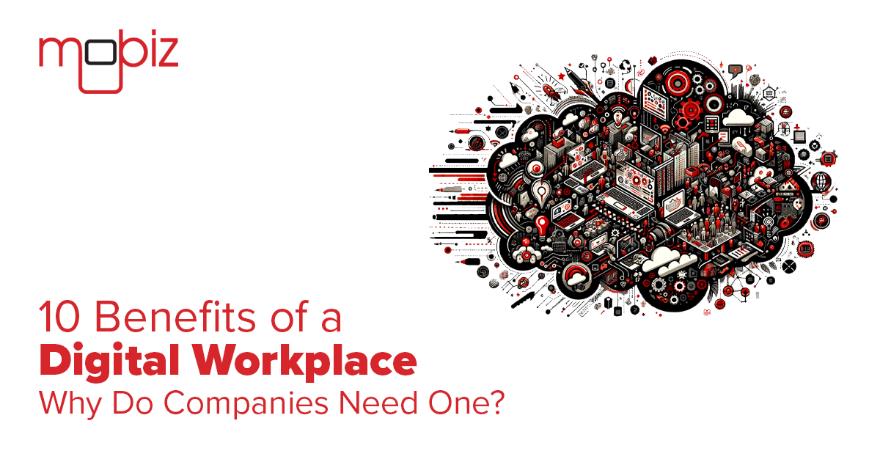

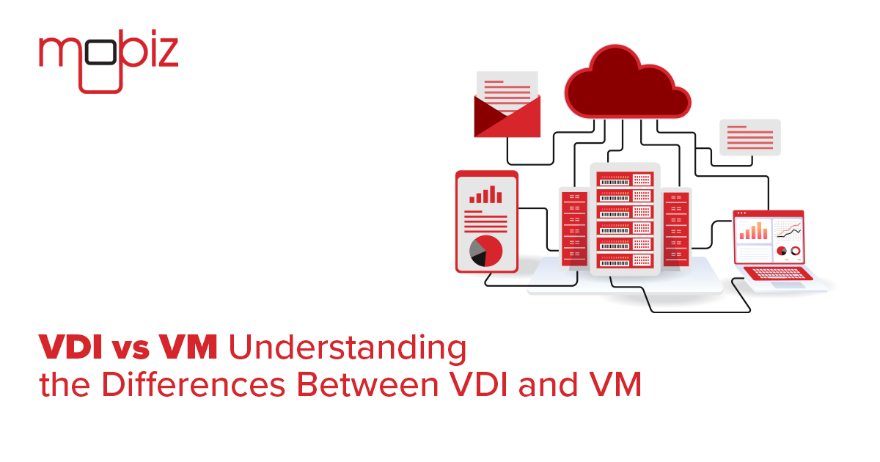
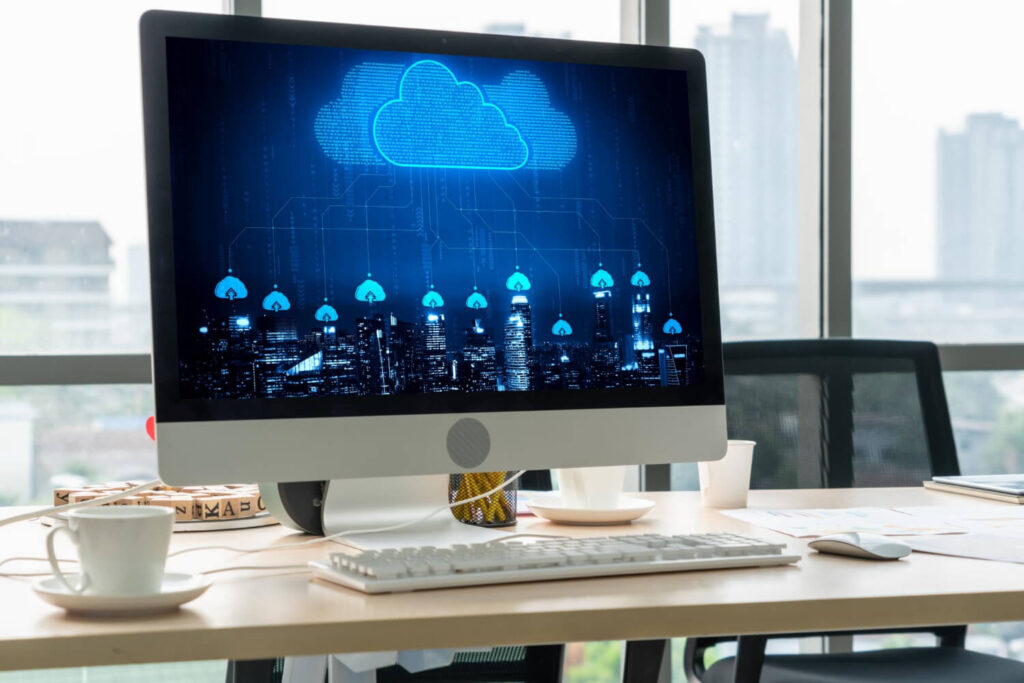
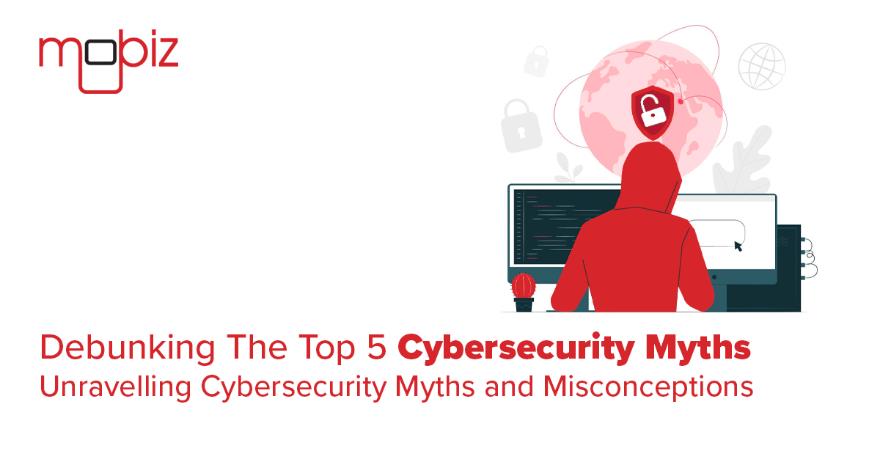
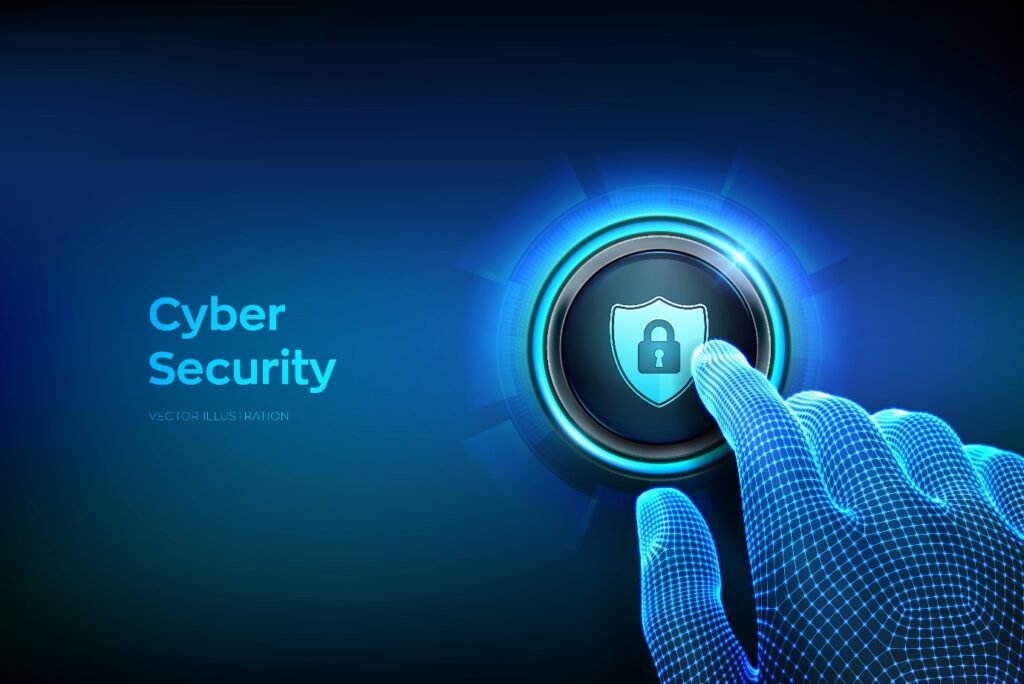
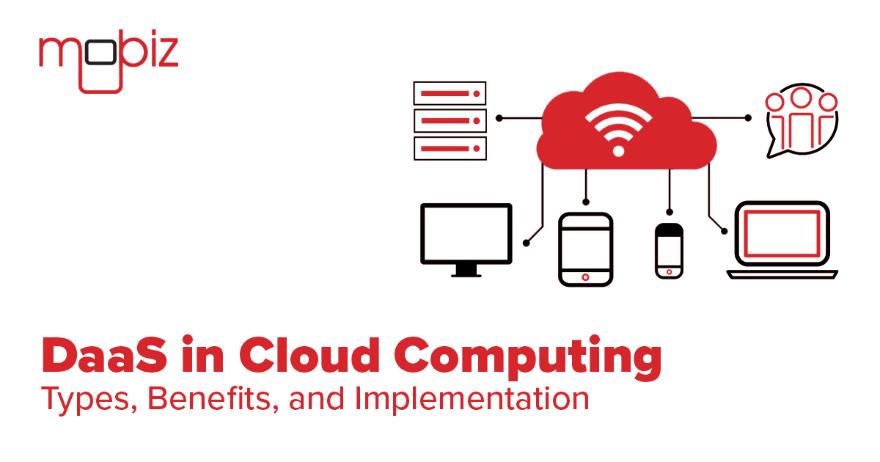
 DaaS vs. VDI
DaaS vs. VDI